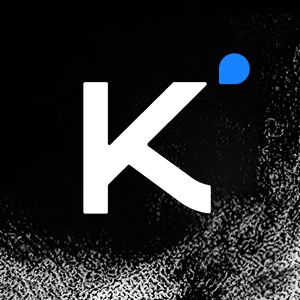Qwen2-VL视频推理中的特征与标记不匹配问题解析与解决方案
2025-05-23 04:13:03作者:瞿蔚英Wynne
问题背景
在Qwen2-VL多模态大模型的实际应用中,开发者经常遇到视频推理过程中的一个典型错误:"ValueError: Video features and video tokens do not match"。这个错误表明模型在处理视频输入时,视频特征与视频标记数量不一致,导致推理过程失败。本文将深入分析这一问题的成因,并提供完整的解决方案。
问题现象分析
当开发者使用Qwen2-VL模型进行视频内容分析时,可能会遇到以下错误提示:
ValueError: Video features and video tokens do not match: tokens: 0, features 1152
这一错误通常发生在以下场景:
- 使用官方代码进行视频推理时
- 输入格式不符合模型预期时
- 聊天模板配置不正确时
根本原因探究
经过深入分析,我们发现这一问题主要由两个关键因素导致:
1. 输入数据结构错误
原始代码中,开发者将消息内容直接以字典形式append到messages列表中,而实际上模型期望的是一个包含字典的列表。这种数据结构的不匹配导致处理器无法正确解析视频输入。
错误示范:
messages.append({
"role": "user",
"content": [...]
})
正确示范:
messages.append([{
"role": "user",
"content": [...]
}])
2. 聊天模板配置问题
部分情况下,模型目录中的chat_template.json文件可能配置不当,特别是从不同版本迁移时。不正确的模板会导致文本处理异常,进而影响视频特征的匹配。
解决方案
方案一:修正输入数据结构
确保消息列表中的每个元素都是一个包含消息字典的列表:
messages.append([
{
"role": "user",
"content": [
{
"type": "video",
"video": "file:///path/to/video.mp4",
"max_pixels": 224*224,
"fps": 12
},
{
"type": "text",
"text": "请分析视频内容..."
}
]
}
])
方案二:更新聊天模板
检查模型目录中的chat_template.json文件,确保其内容符合Qwen2-VL的最新规范。以下是推荐的模板内容:
{
"chat_template": "{% set image_count = namespace(value=0) %}{% set video_count = namespace(value=0) %}{% for message in messages %}{% if loop.first and message['role'] != 'system' %}<|im_start|>system\nYou are a helpful assistant.<|im_end|>\n{% endif %}<|im_start|>{{ message['role'] }}\n{% if message['content'] is string %}{{ message['content'] }}<|im_end|>\n{% else %}{% for content in message['content'] %}{% if content['type'] == 'image' or 'image' in content or 'image_url' in content %}{% set image_count.value = image_count.value + 1 %}{% if add_vision_id %}Picture {{ image_count.value }}: {% endif %}<|vision_start|><|image_pad|><|vision_end|>{% elif content['type'] == 'video' or 'video' in content %}{% set video_count.value = video_count.value + 1 %}{% if add_vision_id %}Video {{ video_count.value }}: {% endif %}<|vision_start|><|video_pad|><|vision_end|>{% elif 'text' in content %}{{ content['text'] }}{% endif %}{% endfor %}<|im_end|>\n{% endif %}{% endfor %}{% if add_generation_prompt %}<|im_start|>assistant\n{% endif %}"
}
最佳实践建议
- 输入验证:在处理视频前,先验证输入数据结构是否符合要求
- 错误处理:实现健壮的错误处理机制,包括内存不足时的自动批处理调整
- 日志记录:详细记录处理过程,便于问题排查
- 分布式处理:对于大规模视频处理,考虑使用多GPU并行处理
完整示例代码
以下是一个经过优化的视频处理脚本,包含了错误处理和分布式支持:
import json
from transformers import Qwen2VLForConditionalGeneration, AutoProcessor
import torch
import os
from tqdm import tqdm
def process_videos(video_files, model_path, output_file):
# 加载模型和处理器
model = Qwen2VLForConditionalGeneration.from_pretrained(
model_path,
torch_dtype=torch.bfloat16,
device_map="auto"
)
processor = AutoProcessor.from_pretrained(model_path)
results = []
for video_file in tqdm(video_files, desc="Processing videos"):
try:
# 准备输入消息
messages = [[
{
"role": "user",
"content": [
{
"type": "video",
"video": f"file:///{video_file}",
"max_pixels": 224*224,
"fps": 12
},
{
"type": "text",
"text": "请分析视频内容..."
}
]
}
]]
# 处理输入
texts = [processor.apply_chat_template(msg, tokenize=False) for msg in messages]
_, video_inputs = process_vision_info(messages)
inputs = processor(
text=texts,
videos=video_inputs,
padding=True,
return_tensors="pt"
).to("cuda")
# 生成输出
generated_ids = model.generate(**inputs, max_new_tokens=256)
output_texts = processor.batch_decode(
generated_ids[:, inputs.input_ids.shape[1]:],
skip_special_tokens=True
)
results.append({
"video": video_file,
"caption": output_texts[0]
})
except Exception as e:
print(f"Error processing {video_file}: {str(e)}")
# 保存结果
with open(output_file, "w") as f:
json.dump(results, f, ensure_ascii=False, indent=4)
总结
Qwen2-VL作为强大的多模态大模型,在视频内容理解方面表现出色,但需要注意正确的输入格式和配置。通过本文介绍的方法,开发者可以有效地解决视频特征与标记不匹配的问题,充分发挥模型的视频理解能力。在实际应用中,建议结合具体场景调整视频参数(如分辨率、帧率等),以平衡处理速度和分析精度的需求。
登录后查看全文
热门项目推荐
相关项目推荐
 AutoGLM-Phone-9BAutoGLM-Phone-9B是基于AutoGLM构建的移动智能助手框架,依托多模态感知理解手机屏幕并执行自动化操作。Jinja00
AutoGLM-Phone-9BAutoGLM-Phone-9B是基于AutoGLM构建的移动智能助手框架,依托多模态感知理解手机屏幕并执行自动化操作。Jinja00 Kimi-K2-ThinkingKimi K2 Thinking 是最新、性能最强的开源思维模型。从 Kimi K2 开始,我们将其打造为能够逐步推理并动态调用工具的思维智能体。通过显著提升多步推理深度,并在 200–300 次连续调用中保持稳定的工具使用能力,它在 Humanity's Last Exam (HLE)、BrowseComp 等基准测试中树立了新的技术标杆。同时,K2 Thinking 是原生 INT4 量化模型,具备 256k 上下文窗口,实现了推理延迟和 GPU 内存占用的无损降低。Python00
Kimi-K2-ThinkingKimi K2 Thinking 是最新、性能最强的开源思维模型。从 Kimi K2 开始,我们将其打造为能够逐步推理并动态调用工具的思维智能体。通过显著提升多步推理深度,并在 200–300 次连续调用中保持稳定的工具使用能力,它在 Humanity's Last Exam (HLE)、BrowseComp 等基准测试中树立了新的技术标杆。同时,K2 Thinking 是原生 INT4 量化模型,具备 256k 上下文窗口,实现了推理延迟和 GPU 内存占用的无损降低。Python00 GLM-4.6V-FP8GLM-4.6V-FP8是GLM-V系列开源模型,支持128K上下文窗口,融合原生多模态函数调用能力,实现从视觉感知到执行的闭环。具备文档理解、图文生成、前端重构等功能,适用于云集群与本地部署,在同类参数规模中视觉理解性能领先。Jinja00
GLM-4.6V-FP8GLM-4.6V-FP8是GLM-V系列开源模型,支持128K上下文窗口,融合原生多模态函数调用能力,实现从视觉感知到执行的闭环。具备文档理解、图文生成、前端重构等功能,适用于云集群与本地部署,在同类参数规模中视觉理解性能领先。Jinja00 HunyuanOCRHunyuanOCR 是基于混元原生多模态架构打造的领先端到端 OCR 专家级视觉语言模型。它采用仅 10 亿参数的轻量化设计,在业界多项基准测试中取得了当前最佳性能。该模型不仅精通复杂多语言文档解析,还在文本检测与识别、开放域信息抽取、视频字幕提取及图片翻译等实际应用场景中表现卓越。00
HunyuanOCRHunyuanOCR 是基于混元原生多模态架构打造的领先端到端 OCR 专家级视觉语言模型。它采用仅 10 亿参数的轻量化设计,在业界多项基准测试中取得了当前最佳性能。该模型不仅精通复杂多语言文档解析,还在文本检测与识别、开放域信息抽取、视频字幕提取及图片翻译等实际应用场景中表现卓越。00 GLM-ASR-Nano-2512GLM-ASR-Nano-2512 是一款稳健的开源语音识别模型,参数规模为 15 亿。该模型专为应对真实场景的复杂性而设计,在保持紧凑体量的同时,多项基准测试表现优于 OpenAI Whisper V3。Python00
GLM-ASR-Nano-2512GLM-ASR-Nano-2512 是一款稳健的开源语音识别模型,参数规模为 15 亿。该模型专为应对真实场景的复杂性而设计,在保持紧凑体量的同时,多项基准测试表现优于 OpenAI Whisper V3。Python00 GLM-TTSGLM-TTS 是一款基于大语言模型的高质量文本转语音(TTS)合成系统,支持零样本语音克隆和流式推理。该系统采用两阶段架构,结合了用于语音 token 生成的大语言模型(LLM)和用于波形合成的流匹配(Flow Matching)模型。 通过引入多奖励强化学习框架,GLM-TTS 显著提升了合成语音的表现力,相比传统 TTS 系统实现了更自然的情感控制。Python00
GLM-TTSGLM-TTS 是一款基于大语言模型的高质量文本转语音(TTS)合成系统,支持零样本语音克隆和流式推理。该系统采用两阶段架构,结合了用于语音 token 生成的大语言模型(LLM)和用于波形合成的流匹配(Flow Matching)模型。 通过引入多奖励强化学习框架,GLM-TTS 显著提升了合成语音的表现力,相比传统 TTS 系统实现了更自然的情感控制。Python00 Spark-Formalizer-X1-7BSpark-Formalizer 是由科大讯飞团队开发的专用大型语言模型,专注于数学自动形式化任务。该模型擅长将自然语言数学问题转化为精确的 Lean4 形式化语句,在形式化语句生成方面达到了业界领先水平。Python00
Spark-Formalizer-X1-7BSpark-Formalizer 是由科大讯飞团队开发的专用大型语言模型,专注于数学自动形式化任务。该模型擅长将自然语言数学问题转化为精确的 Lean4 形式化语句,在形式化语句生成方面达到了业界领先水平。Python00
项目优选
收起
deepin linux kernel
C
24
9
Nop Platform 2.0是基于可逆计算理论实现的采用面向语言编程范式的新一代低代码开发平台,包含基于全新原理从零开始研发的GraphQL引擎、ORM引擎、工作流引擎、报表引擎、规则引擎、批处理引引擎等完整设计。nop-entropy是它的后端部分,采用java语言实现,可选择集成Spring框架或者Quarkus框架。中小企业可以免费商用
Java
9
1
🔥LeetCode solutions in any programming language | 多种编程语言实现 LeetCode、《剑指 Offer(第 2 版)》、《程序员面试金典(第 6 版)》题解
Java
64
19
本仓将收集和展示高质量的仓颉示例代码,欢迎大家投稿,让全世界看到您的妙趣设计,也让更多人通过您的编码理解和喜爱仓颉语言。
Cangjie
392
3.89 K
暂无简介
Dart
671
156
喝着茶写代码!最易用的自托管一站式代码托管平台,包含Git托管,代码审查,团队协作,软件包和CI/CD。
Go
23
0
React Native鸿蒙化仓库
JavaScript
261
322
本项目是CANN提供的数学类基础计算算子库,实现网络在NPU上加速计算。
C++
661
311
🎉 (RuoYi)官方仓库 基于SpringBoot,Spring Security,JWT,Vue3 & Vite、Element Plus 的前后端分离权限管理系统
Vue
1.2 K
654
无需学习 Kubernetes 的容器平台,在 Kubernetes 上构建、部署、组装和管理应用,无需 K8s 专业知识,全流程图形化管理
Go
15
1